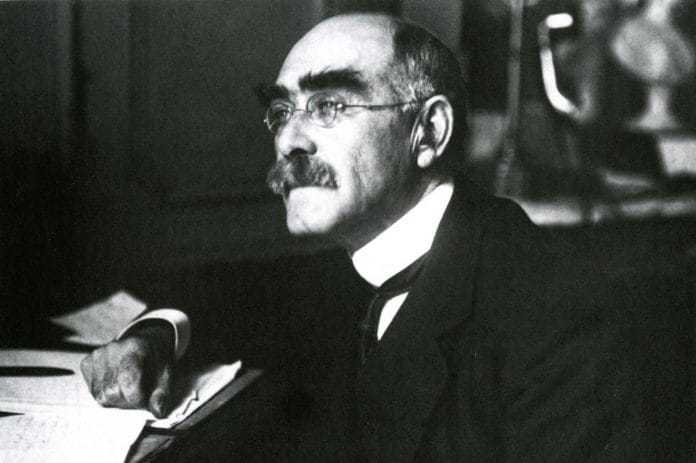Despite his extensive stay in the country, which inspired his works, Kipling drew criticism in post-colonial India over his racism.
New Delhi: Most well known for his short stories collection The Jungle Book, which Hollywood can’t seem to stop adapting for the screen, accomplished writer Rudyard Kipling is seen as a major innovator in literature for children with his short stories that are considered classics.
One of the most celebrated poets and storytellers of the 20th century, Kipling remains the youngest recipient of Nobel Prize in Literature (1907). He was 41 at the time.
On his 152nd birth anniversary, ThePrint takes a look at the life of the writer, including his time in India.
Life in India
Born to John Lockwood Kipling and Alice Kipling in Bombay, the writer spent the first few years of his life in India.
In his autobiography, Something of Myself for my Friends Known and Unknown, Kipling described his earliest memories of India.
“My first impression is of daybreak, light and colour and golden and purple fruits at the level of my shoulder. This would be the memory of early morning walks to the Bombay fruit market with my ayah and later with my sister in her perambulator, and of our returns with our purchases piled high on the bows of it,” wrote Kipling.
In 1871, Kipling’s parents sent him to England to begin his schooling. Accompanied by his sister Beatrice, he was sent to a boarding house. The siblings spent the next six years there, which they called “The Desolation House”.
After he finished his school education, Kipling returned to Bombay (now Mumbai) on 18 October 1882.
The writer described the moment thus: “So, at sixteen years and nine months, but looking four or five years older, and adorned with real whiskers which the scandalised Mother abolished within one hour of beholding, I found myself at Bombay where I was born, moving among sights and smells that made me deliver in the vernacular sentences whose meaning I knew not. Other Indian-born boys have told me how the same thing happened to them.”
Kipling started working as a journalist at the Civil and Military Gazette in Lahore. He referred to the gazette as the “mistress and most true love”.
During these years, he published the Plain Tales from the Hills and Departmental Ditties, his first major collection of poems.
In 1888, Kipling moved to Allahabad to work with The Pioneer.
Several of his works like The Phantom ‘Rickshaw and Other Tales, The Story of the Gadsbys, Soldiers Three, Under the Deodars, and Wee Willie Winkie and Other Child Stories were published during this period.
He then decided to move to England to pursue writing full time.
India remained an inspiration to Kipling for his works. However, in post-colonial India, Kipling is seen as an imperialist, especially by nationalists who saw racism in much of his writing. Several other writers, including George Orwell, too disapproved of his political views.
Also read: Remembering RK Laxman, the cartoonist who immortalised the Common Man
The Jungle Book success
According to Kipling’s official biographer C.E. Carrington, the year 1890 was “Rudyard Kipling’s Year”.
Kipling’s fame during his stay in London brought him attention from several influential people. One of them was American author and publisher Wolcott Balestier, who persuaded Kipling to work on a collaborative novel.
As a result, Kipling wrote The Naulakha. The book didn’t succeed and Balestier himself didn’t live to see the published book. But Kipling grew close to Balestier and his family and married his sister Caroline. The couple settled in Vermont.
The cornerstone of Kipling’s reputation as a writer and considered to be his most famous work, The Jungle Book, was published in 1894.
In his autobiography, Kipling said that he drew inspiration for his books from stories he read when he was young. The story was “about a lion-hunter in South Africa who fell among lions who were all Freemasons, and with them entered into a confederacy against some wicked baboons”.
Kipling produced several other works over the years. His novel Kim and poem If are considered among his best.
He was also involved with the Boer War in South Africa as a war correspondent, and in 1917 was assigned the post of “Honorary Literary Advisor” to the Imperial War Graves Commission.
He continued writing till the early 1930s.
On 12 January 1936, Kipling suffered a haemorrhage in his small intestine. He underwent a surgery but died less than a week later on 18 January.
A magazine had previously incorrectly announced the news of Kipling’s death. He wrote back to the magazine: “I’ve just read that I am dead. Don’t forget to delete me from your list of subscribers.”






